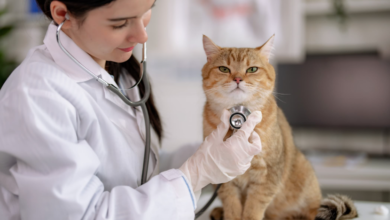Tattoo removal: Why a professional approach prevents scarring

You want the ink gone without trading it for a new problem. The reassuring truth is that with a careful plan, scar free outcomes are the norm. The risk isn’t the laser itself; it’s how, when, and on whom it’s used. Below, U’ll find a clear, practical guide to why expert planning matters, what decisions keep skin safe, and how your choices between visits protect the finish. At NDN.LASER, we design results first by putting skin biology ahead of speed. Scars form when injury outruns controlled healing. Old school methods dermabrasion, chemical ink “peels,” surgical excision remove or tear at the surface by design. In contrast, modern tatoeage verwijderen relies on selective photothermolysis: The pigment absorbs a specific wavelength, fractures into microscopic particles, and the surrounding tissue is spared with cooling and precise timing. When the settings respect your skin type and the schedule respects recovery, the surface remains quiet while the target takes the hit. Key risk raisers are predictable and preventable: Treating recently tanned skin, stacking sessions too closely, chasing every colour in one sitting, using the wrong wavelength for a given pigment, or skipping aftercare that keeps the barrier calm.
The physics that keeps skin safe
Lasers are filters, not floodlights. The safety advantage comes from matching three levers to your biology:
- Wavelength: The “colour” of light your ink drinks.
- Pulse duration: How long that energy lands.
- Fluence: How strong each pulse is.
When those levers are tuned to u, tattoo removal is efficient and skin kind; when they’re guessed, heat spreads and recovery drags.
See also: Find Cat Veterinarian: A Complete Guide to Keeping Your Feline Healthy
Skin tone first: Melanin is a co target
Melanin also absorbs light. On higher melanin skin (Fitzpatrick IV–VI) we favour deeper penetrating wavelengths and conservative energy ramps; on lighter tones (I–III) we can widen the menu and move faster. This isn’t brand hype it’s risk control. The goal is simple: keep the epidermis cool and steady while the pigment takes the meaningful dose. In practical terms, that’s fewer hot spots, steadier tone, and calmer photos at the two to three week check.

Pulse domain: Pico versus nano (tool, not religion)
Nanosecond q switched platforms are proven workhorses. Picosecond systems deliver shorter pulses that create a stronger photoacoustic impact with less thermal spread useful for dense, layered pigment or old cover ups. The right choice is the one that moves your ink safely today; in many courses we blend them (pico for stubborn blocks, nano for broader, lower risk sweeps). Tools help, but strategy wins.
Spacing that speeds the result (counterintuitive but true)
Clearance happens between visits as macrophages carry pigment fragments away. Stack sessions too tightly and you stack inflammation without extra fade. Most body sites do best with 6–10 week intervals; distal areas (ankles, hands) or higher melanin skin often benefit from the longer end. Honest spacing makes sessions feel easier over time, because density drops, heat dissipates faster, and the surface settles sooner exactly the trend you want if scarring is your concern.
Why a test spot beats ten guesses
A tiny test spot answers what photos cannot: How quickly do you “frost” on the day? What does early fade look like at 2-3 weeks? Do we adjust fluence, spot size, or pulse width? With professional tattoo removal, we’d rather measure once than injure twice. The test spot tunes the recipe to your biology, keeps early sessions conservative, and shortens the overall course by avoiding mis spent passes.
Technique that protects texture
Comfort measures do double duty as safety measures:
- Robust cooling (contact tips or high flow cold air) keeps the epidermis chilled while energy targets pigment below.
- Skin stretch and stable positioning reduce nerve chatter and make each pass more even.
- Short, methodical passes with micro pauses beat long “hero” runs; the barrier stays happier, and photos look cleaner in three weeks.
These are small choices with big cumulative effects. They’re also the difference between a hot, blotchy evening and a quiet, forgettable one.
Aftercare: The half you control
Treatment day is half the job. The other half is what you do at home. For the first 48 hours, think cool, clean, protected: Brief cool compresses if warm, lukewarm water plus a very gentle, fragrance free cleanser, pat dry (don’t rub), and a bland moisturiser or light occlusive. Avoid saunas, hot yoga, tight heat trapping kit, and pools for 24-48 hours. Most importantly, treat UV as the deal breaker: Broad spectrum SPF 50 and real shade on exposed skin for the entire course and several weeks after each visit. Ultraviolet exposure is the number one cause of patchy outcomes after tattoo removal and it’s the easiest thing to control.
Red flags to avoid
Be wary of providers who promise “one and done,” skip skin typing, ignore medications (especially photosensitisers), refuse a test spot, or can’t explain why a particular wavelength and pulse domain match your ink. Professional tattoo removal should sound like a plan parameters, intervals, contingencies not a machine demo.
Why NDN.LASER puts planning before power
U deserve more than a timeslot. We map your ink and skin, run a test spot, choose wavelengths by colour chemistry, and pace visits by evidence photos, not guesswork. On higher melanin skin we prioritise deeper wavelengths and longer pulses; on multicolour art we stage hues in a sensible order. The through line never changes: Safety first, outcome second, speed third. In practice, that order is how professional tattoo removal prevents scarring and still lands on the efficient side of the range.
Bottom line
Scar free isn’t luck; it’s design. Match wavelength and pulse to your pigment, space sessions so biology can finish the job, and guard recovery like the result depends on it because it does. Start with a thoughtful consult, insist on a test spot, and keep aftercare simple. Do that, and tattoo removal becomes predictable: short, purposeful passes in clinic, quiet skin at home, steady fading at 2-3 weeks, and a clean finish that looks good in photos and even better up close.
Discover how NDN.LASER can support you with customized solutions.







